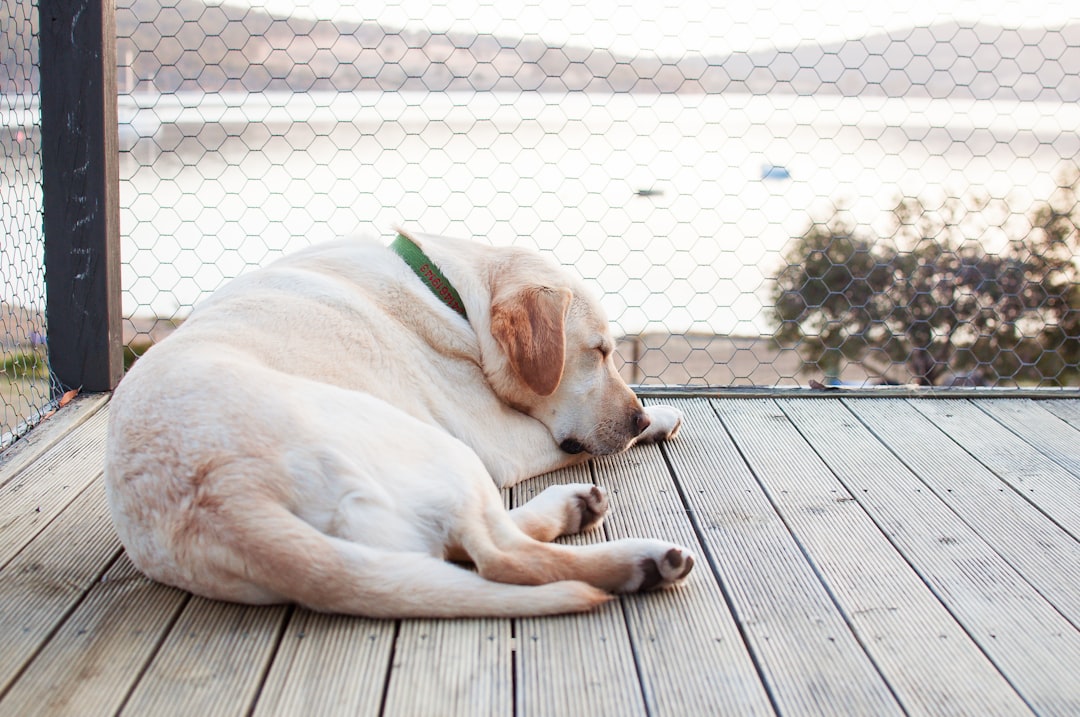Understanding Canine Sleep: Decoding the Sleep Patterns and Needs of Dogs
The Sleep Patterns of Dogs: How Much Sleep Do They Need? – Exploring the varying sleep needs of dogs based on factors such as age, breed, and health, and the importance of understanding and addressing changes in their sleep patterns for their overall well-being.
Dog Sleep Patterns: An Overview
Dogs, like humans, require adequate sleep for their overall well-being. The amount of sleep needed varies based on factors such as age, breed, and health [1]. Understanding the sleep patterns of dogs is essential for providing them with the necessary care and attention.
Dogs are known to spend about 50% of their day sleeping, but this can vary depending on the specific characteristics of the dog. For instance, puppies, large-breed dogs, and older dogs tend to require more sleep, with puppies needing up to 18-20 hours of sleep per day. On the other hand, small-breed dogs and working dogs may need less sleep due to their size and activity levels. It’s important to recognize these differences to ensure that each dog’s specific sleep needs are met.
In addition to age and breed, factors such as REM sleep, exercise, surroundings, and health can also influence a dog’s sleep patterns. For instance, changes in a dog’s sleep patterns could be indicators of underlying health issues such as diabetes, kidney disease, hypothyroidism, heart disease, or arthritis. Understanding these factors allows pet owners to monitor their dog’s sleep behavior effectively and take necessary action if any changes are observed.
Understanding Canine Sleep Patterns
Understanding the sleep patterns of dogs is crucial for ensuring their overall well-being. On average, dogs spend about 50% of their day sleeping, but the specific duration varies based on factors such as age and breed. For instance, puppies, large-breed dogs, and older dogs tend to require more sleep compared to small-breed dogs and working dogs. This means that a Great Dane will have different sleep needs compared to a Border Collie, and it’s essential for dog owners to be mindful of these variations to cater to their pet’s specific needs.
In addition to age and breed, several other factors influence a dog’s sleep patterns, including REM sleep, exercise, surroundings, and overall health. For example, if a dog is not getting enough exercise during the day, they may experience difficulties settling down for sleep at night. Furthermore, just like humans, dogs have different stages of sleep, and REM sleep plays a vital role in their overall well-being. It’s important to create a conducive sleep environment for your dog, taking into account these factors to ensure they are getting the rest they need for optimal health and happiness.
Factors Affecting Dog Sleep
The sleep patterns of dogs are influenced by various factors, including age, breed, and overall health. For example, puppies have different sleep needs compared to adult and senior dogs. Puppies may need up to 18-20 hours of sleep to support their rapid growth and development, while adult dogs require 8 to 14 hours of sleep to maintain their energy levels and overall well-being. On the other hand, senior dogs may sleep for 18 to 20 hours per day, as their bodies require more rest for recovery and comfort.
Moreover, changes in a dog’s sleep patterns could be an indication of underlying health issues. These changes may manifest as restlessness, excessive sleep, or difficulty falling asleep. Conditions such as diabetes, kidney disease, hypothyroidism, heart disease, or arthritis can impact a dog’s sleep behavior. Therefore, pet owners should carefully monitor their dogs’ sleeping habits and consult a veterinarian if they notice any significant deviations from their typical sleep patterns. Seeking timely veterinary advice can help address potential health concerns and ensure the well-being of the dog. It’s essential to recognize that a dog’s sleep is not just a restful activity but a crucial indicator of their overall health and vitality.
Addressing Changes in Dog Sleep Patterns
It’s crucial to closely monitor a dog’s sleep behavior as it can be indicative of underlying stress or potential health issues. Dogs tend to be resilient about adjusting their sleep schedules, but establishing a consistent sleep routine for them is essential for their overall well-being. For instance, restlessness at night in senior dogs might be attributed to sundowning or a need to urinate more frequently, which can often be addressed with medications or environmental accommodations, ensuring a more restful sleep. It’s also important to note that excessive sleep in dogs may serve as a red flag for various conditions such as depression, diabetes, hypothyroidism, and potential loss of hearing, emphasizing the need for pet owners to remain vigilant about any changes in their dog’s sleep patterns.
In addition, changes in a dog’s sleep patterns could be attributed to a variety of factors such as a change in diet, pain, underlying health conditions, or even doggy dementia. These factors can lead to alterations in the duration and quality of a dog’s sleep, making it crucial for pet owners to be observant and proactive in addressing any deviations in their dog’s sleep behavior. This proactive approach not only ensures the well-being of the pet but also contributes to the early detection and management of any potential health concerns, thereby promoting a healthier and happier life for the dog. By paying close attention to a dog’s sleep patterns, pet owners can play a pivotal role in identifying and addressing any issues that may arise, thereby fostering a supportive and nurturing environment for their furry companions.
 Creating a Good Sleep Environment for Dogs
Creating a Good Sleep Environment for Dogs
When it comes to creating an optimal sleep environment for dogs, there are several key factors to consider. Providing a comfortable and quiet sleeping space is crucial for improving a dog’s sleep quality. Just like humans, dogs appreciate a cozy and peaceful spot to rest, free from disruptions and noise. This can be achieved by designating a specific area in the home for the dog’s bed, away from high-traffic areas and loud noises. Additionally, ensuring that the temperature of the sleeping area is comfortable for the dog is essential. Dogs, especially those with thick fur or short snouts, can be sensitive to extreme temperatures, so maintaining a moderate climate in the sleeping area is beneficial for their rest.
Regular exercise is another important component for enhancing a dog’s sleep quality. Dogs, regardless of breed or age, benefit greatly from engaging in physical activities during the day. Taking dogs for walks, playing fetch, or allowing them to run around in a fenced yard can help expend their energy, resulting in a more restful sleep. Moreover, mental stimulation through interactive toys and training exercises can also contribute to a dog’s overall tiredness, promoting better sleep patterns. It’s important to note that large-breed dogs, puppies, and senior dogs may have additional sleep requirements due to their various activities and recovery needs. For instance, puppies engage in frequent bursts of energy followed by deep sleep, while senior dogs may require more time to rest and recuperate after physical exertion. Recognizing and accommodating these specific needs is crucial for ensuring the well-being of dogs and promoting a healthy sleep routine [2].
 Conclusion
Conclusion
In conclusion, it is crucial to prioritize the sleep patterns and needs of our canine friends to maintain their overall well-being. By acknowledging the impact of factors such as age, breed, and health on their sleep requirements, we can tailor our approach to ensure that each dog receives adequate rest. For example, understanding that large-breed dogs, puppies, and senior dogs need even more sleep due to their activities and recovery needs can guide us in making the necessary adjustments to accommodate their specific sleep requirements.
Furthermore, recognizing the signs of stress or potential health issues related to a dog’s sleep behavior and taking proactive measures, such as setting a sleep schedule, can significantly contribute to their quality of life. For instance, restlessness at night in senior dogs may be due to sundowning or a need to urinate more frequently, which can often be addressed with medication or accommodations. By being attentive to these signs and making appropriate modifications, we can ensure that our furry companions enjoy restful and undisturbed sleep. Therefore, understanding and addressing changes in a dog’s sleep patterns is pivotal for their overall health and happiness [1].


